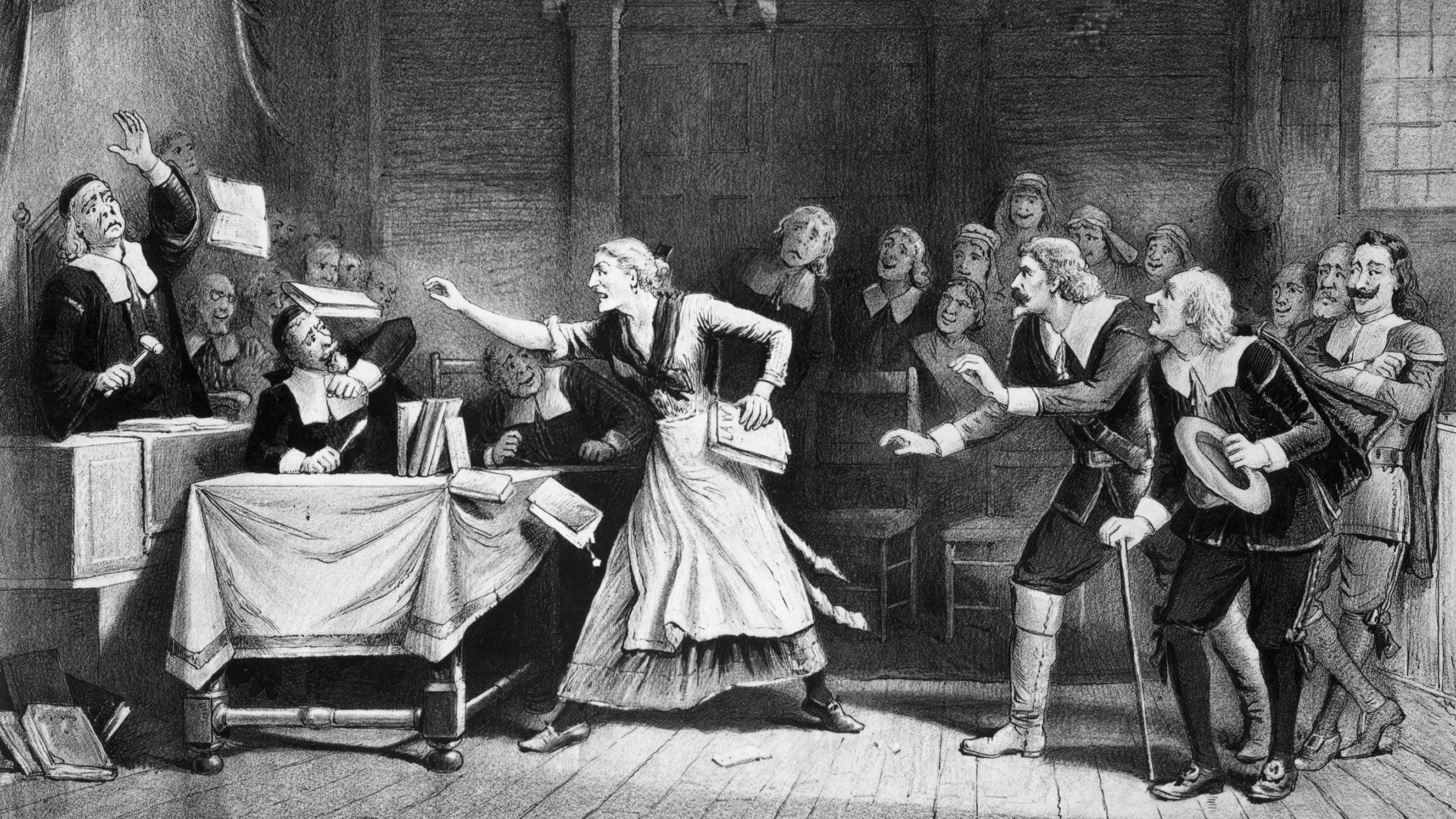
Were any 'witches' burned at Salem?
Nearly 20 "witches" were executed in the English colony.

Between 1692 and 1693, accusations of witchcraft were made in and around the town of Salem in Massachusetts, leading to the arrests of about 150 people. These charges were taken seriously, and the ensuing trials resulted in the executions of 19 people.
But how were these "witches" executed? Were any burned alive at the stake, a common punishment for convicted witches in Europe? After all, at the time Salem was part of the Province of Massachusetts Bay, an English colony.
The answer is no; witches in England’s American colonies were killed another way.
"At Salem no one was burned. Instead, they hanged them," said Elizabeth Reis, a professor at Macaulay Honors College at the City University of New York and author of the book "Damned Women: Sinners and Witches in Puritan New England" (Cornell University Press, 1999).
Related: When did humans discover how to use fire?
England and its American colonies were an anomaly during that period, at least when it came to burning those accused of witchcraft. "Burning at the stake was not used as a method of execution for convicted witches in Salem or anywhere in the American colonies or England," said Emerson Baker, a history professor at Salem State University who wrote the book "A Storm of Witchcraft: The Salem Trials and the American Experience" (Oxford University Press, 2014).
"In England and her colonies, witchcraft was tried in criminal courts, like any other capital crime. And the punishment for capital crimes was death by hanging," Baker told Live Science in an email. "Meanwhile, on the European continent, witch cases tended to be tried by ecclesiastical courts [a court run by the church]. When people were accused of witchcraft before an ecclesiastical court, it was treated as heresy. The punishment for someone convicted of heresy was burning at the stake," Baker said.
Sign up for the Live Science daily newsletter now
Get the world’s most fascinating discoveries delivered straight to your inbox.
The ecclesiastical courts in continental Europe saw burning at the stake as a way to purify the soul. "Burning was supposedly a way to purify the convict, and also as a threat to uncover conspiracies," said Peter Hoffer, a distinguished research professor of history at the University of Georgia and author of the book "The Salem Witchcraft Trials: A Legal History" (University Press of Kansas, 1997). Church authorities in Europe sometimes feared that people would make conspiracies with the devil against them.
Burial and memorial
Recent historical research has identified a site now called "Proctor's Ledge" as being the place where the convicted were hanged at Salem. In 2017, Salem erected a memorial for the people who were executed at the site.
The bodies of those hanged were dumped in a location near Proctor's Ledge. "An eye witness account says the bodies were dumped into shallow rocky crevices in the ledge under the shallow soil. There are references to several bodies being removed at night by family members and buried at their homes," said Benjamin Ray, a professor emeritus of religious studies at the University of Virginia who wrote the book "Satan and Salem: The Witch-Hunt Crisis of 1692" (University of Virginia Press, 2015).
Ray noted that attempts have been made to find the bodies of those hanged, but so far they have been unsuccessful. "Ground penetrating radar indicates there are only these crevices, little space for bodies, and none have been discovered," Ray told Live Science in an email.
Originally published on Live Science.

Owen Jarus is a regular contributor to Live Science who writes about archaeology and humans' past. He has also written for The Independent (UK), The Canadian Press (CP) and The Associated Press (AP), among others. Owen has a bachelor of arts degree from the University of Toronto and a journalism degree from Ryerson University.










